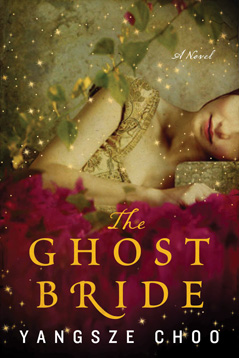Tea can be a dangerous thing
 CREDIT: MUMTAZ MUSTAFA, VANESSA HO / TREVILLION IMAGES (2013)
CREDIT: MUMTAZ MUSTAFA, VANESSA HO / TREVILLION IMAGES (2013)When your only choices are between a ghost and a possible murderer, the truth is worth any cost.
Growing up in colonial Malaya, Li Lan was all too aware of her family’s position. After the death of her mother, her father spun further into debt and an opium addiction. As resources dwindled, her Amah, a servant who played the role of maid and guardian, dipped further and further into her personal funds to keep the house afloat. Worried about her father and Amah, Li Lan knew she had only one hope: a good marriage.
When that marriage offer comes, however, it’s not from a living man. Instead, Li Lan becomes part of a complicated scheme that twists justice and revenge. Drawn deeper and deeper into the afterlife, she must struggle with her beliefs, duties and desires while the clock ticks and she slowly fades from one world to the next.
Mixing Chinese folklore with Buddhist and Taoist beliefs on the afterlife, The Ghost Bride by Yangsze Choo manages to be both a coming of age story and a mystery. Every moment is rife with cultural significance as the historical context of the small port city of Malacca is explored.
The Malaya of 1893, with its cultural diversity and social complexities, makes for a fascinating backdrop to the story, and the mixing of old beliefs and fantasy allows for a creative tale. Choo also includes a small appendix with a guide to the lore she refers to and clarification of cultural points that are important to the story.
Li Lan’s adventure itself also manages to regularly defy expectations. While some points feel a little cliché, often these moments come from the perspective of youthful naïveté. As the story progresses, Li Lan approaches a large number of complex issues with a surprising insight and maturity. The balance between duty and happiness can feel like a razor’s edge, and Li Lan does her best to walk it.
The Ghost Bride also features an amazing collection of characters, from the easily hateable yet, somehow, still sympathetic Lim Tian Ching to the strange and captivating Er Lang. The impossibility of knowing a person’s true colours is constantly apparent as even the kindest individuals have hidden recesses in their hearts, and blunt questions are rarely met with straight answers.
Unlike some books, however, these questions aren’t left unanswered for the sake of leaving questions unanswered. Too often in books directed at teens do authors have the main character ask a much wiser character questions just to get a “This isn’t the time” response. Instead, Choo does have answers given, but they are often in the way that real people answer questions; vague, because they don’t understand what is being asked, or deceitful, in keeping with their own ends.
Between the amazing cultural backdrop and fascinating characters, The Ghost Bride tells a unique story that goes beyond simple definitions of right and wrong. With each step, Li Lan faces down incredible challenges in a world completely different than anything she could have imagined.














